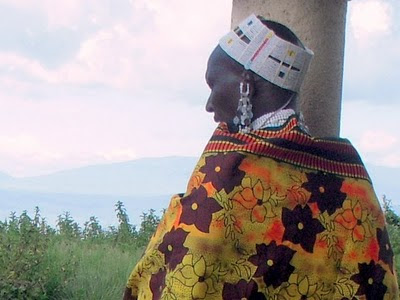
For the next several days I'll be posting from Jamaica and showing you a world that is rarely seen by tourists. I am 40 miles South of the luxury hotels of Montego Bay in a small community called Petersfield. The sign on the wall is written in Patois, the mixture of English, French and Creole that the local people speak. I catch a few words but for, the most part, I understand little.
It has been quite a transition from Africa through Hong Kong and New York to here. For brief moments I feel like I'm in Tanzania because all the people are black and the landscape is quite tropical like in Karagwe, but the similarities end rapidly. The Jamaican tempo and mannerisms are remarkably different. I feel a much more agressive mood in the air and there is virtually no interest in me as an American.
This is a big island 150 miles South of Cuba is separated by miles of ocean from the rest of the Carribean nations. After it received independence in 1962, it suffered economicallywith the caprice of the sugar cane market, then controlled entirely by foreigners. Now tourism and the receipt of moneys sent from relatives in America make up the bulk of Jamaica's income.
When visiting last night with a high school history teacher, I asked about Jamaica's most important historical figures. He believed that no one has made a greater impact on Jamaica more than Bob Marley. Ask anyone and they'll tell you that Marley put Jamaica on the map. Jamaica is all about its music. It is blasted from cars, stores and people are dancing and singing at all hours. The knowledge that their music is adulated throughout the world has given this former colony of slaves a powerful identity and pride found nowhere else in the region.
I also have learned that these Jamacians are not docile people like those I met in Tanzania. Men and women are equal and express themselves strongly. The Jamaican women are really tough too. Woe the guy who tries to rough up a woman. He's likely to be beaten up himself. .
On Monday all the students arrive and by Tuesday we'll all be involved in a building project of some kind. Until then hey mahn, you be good now, eh?
 This is clearly not Bend, Oregon. If people carry the soul of a particular animal then I am a hummingbird, a restless creature that can not sit still. Consequently I felt the need to flit off and fortunately Tapirgal was eager to spend a few days in Maui to celebrate her birthday, so off we flew. Exhausted, but happy after the 6 hour flight, we found our way along a busy winding island road to the condo I had booked hastily.
This is clearly not Bend, Oregon. If people carry the soul of a particular animal then I am a hummingbird, a restless creature that can not sit still. Consequently I felt the need to flit off and fortunately Tapirgal was eager to spend a few days in Maui to celebrate her birthday, so off we flew. Exhausted, but happy after the 6 hour flight, we found our way along a busy winding island road to the condo I had booked hastily.















































